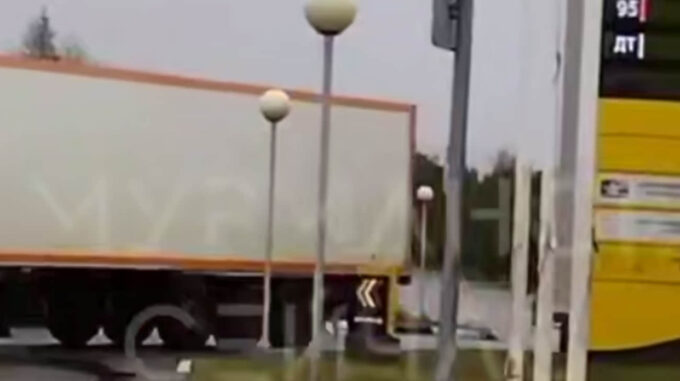Russian media and propaganda resources are reporting a new episode in the war with Ukraine that has gained widespread attention in their information space

According to sources from Russian outlets, Ukrainian unmanned aerial vehicles (UAVs) carried out carefully planned attacks on strategic military airfields, employing a surprising and at the same time daring tactic: they took off from trucks parked at gas stations near cities located close to important military facilities of the aggressor country. According to reports from Russian sources, including Mash and Baza, a detailed description is provided of an incident that occurred in the town of Olenegorsk in northwestern Russia. Video footage circulating on social media shows UAVs emerging from a truck parked at a gas station, launching into the sky and starting their series of attacks. A similar scheme was used in Usolye-Sibirskoye, Irkutsk Region, where defense structures claim that at least 20 drones operated simultaneously. Their reports state that the incident took place early in the morning when a truck stopped near the gate of the town's gas station. Shortly thereafter, several UAVs flew out from the trailer of the vehicle, directed toward strategic targets near military airfields. Russian sources emphasize that the truck driver may have been completely unaware that drones, used for attack purposes, were in his vehicle's cargo area. Preliminary information indicates that he was even detained to clarify the circumstances. According to Ukrainian intelligence agencies, during these events, the Security Service of Ukraine (SBU) carried out a targeted and coordinated strike on four Russian military airfields. The attacked airfields include "Belaya," "Dyakilevo," "Olenegorsk," and "Ivanovo." Sources report that as a result of these actions, a significant number of Russian military aircraft were destroyed or damaged — including burning planes that were aflame on these sites, which until recently served as bases for Russian aviation. In recent weeks, the Russian information space has been filled with reports of destruction and fires at military facilities. In particular, it has been reported that on June 1, during the daytime, fires broke out simultaneously at several strategic airfields, including bases for strategic bombers. Earlier, Ukrainian sources reported successful large-scale drone operations targeting multiple Russian airfields as part of a campaign to destroy enemy military aviation. This situation confirms that Ukrainian forces are actively employing modern technologies to eliminate strategic targets of the enemy, using clever and unconventional routes for drone launches. According to sources, this tactic makes it more difficult for the Russian side to identify and intercept the devices through counter-strike measures. At the same time, Russian specialists are trying to determine how Ukrainian UAVs were able to reach the target areas and from where they took off, since using trucks at gas stations for launching drones—part of what's called the "bourgeois" tactic—opens up new possibilities for the Ukrainian armed forces. Overall, this information reinforces the understanding that the Ukrainian defense strategy is becoming increasingly flexible and diversified, incorporating advanced technologies and clandestine tactics to achieve objectives. Russian experts are concerned that the use of such tactics complicates their ability to secure the safety of strategic aviation and forces a reevaluation of existing air defense systems, since, according to statements from Russian embassies and military circles, Ukrainian drones continue to infiltrate airspace unnoticed and cause serious damage. This, in turn, again confirms the high skill level of Ukrainian special forces in conducting information and military operations in modern conditions. In summary, the scale and significance of these actions demonstrate the tension on the front and show that the war is not conducted solely through traditional methods, but also in the realm of informational and technological competition, where each side seeks to leverage all available technologies to gain an advantage and achieve its desired outcomes.

